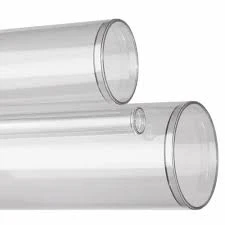okt . 21, 2024 23:14 Back to list
Thermoplastic Welding Rods for Durable and Efficient Plastic Joining Solutions
Understanding Thermoplastic Welding Rods A Guide
Thermoplastic welding rods are essential tools in plastic fabrication and repair processes. Their flexibility, durability, and versatility make them a popular choice across various industries, including automotive, construction, and aerospace. This article delves into what thermoplastic welding rods are, their applications, benefits, and tips for effective use.
What Are Thermoplastic Welding Rods?
Thermoplastic welding rods are elongated cylindrical sticks made from thermoplastic materials, which become pliable or moldable when heated above their melting point. They are used in various welding techniques to create joints and repairs in thermoplastic materials. Common thermoplastic materials include polyethylene (PE), polypropylene (PP), polyvinyl chloride (PVC), and acrylonitrile-butadiene-styrene (ABS), among others.
When heated, thermoplastic welding rods can easily fuse with similar or compatible thermoplastic components. This fusion process creates strong, durable connections that are capable of withstanding significant stress and environmental conditions.
Applications of Thermoplastic Welding Rods
The applications of thermoplastic welding rods are extensive. In the automotive industry, they are used for repairing plastic parts, such as bumpers and dashboards, ensuring a seamless finish and preserving the vehicle's integrity. In construction, these rods enable the joining of plastic sheets for applications like roofing, waterproofing, and drainage systems.
Moreover, they find use in creating custom plastic products through welding processes in manufacturing settings
. Artisans can also employ thermoplastic welding rods for artistic projects, crafting sculptures, and installations due to their excellent adhesive properties and color availability.Benefits of Using Thermoplastic Welding Rods
1. Strong Bonding When properly applied, thermoplastic welding rods form joints that are often stronger than the original material, enhancing the structural integrity of repairs.
2. Versatility These rods can be used with a range of thermoplastic materials, allowing for diverse applications across different sectors. They can be matched with some materials to ensure compatibility, making them suitable for various repairs and creations.
thermoplastic welding rod

3. Cost-Effectiveness Using welding rods to repair instead of replacing broken plastic items can significantly reduce costs. This is especially true in industries where plastic components are prevalent, as the repair process can save both time and money.
4. Simplicity The welding process itself is relatively straightforward, enabling users to perform repairs with minimal training. Equipment used for thermoplastic welding often includes tools like hot air guns, welding machines, and manual welders, which are accessible to most operators.
5. Environmentally Friendly Thermoplastic materials can often be recycled or repurposed, making thermoplastic welding a sustainable option compared to traditional metal welding techniques.
Tips for Effective Use of Thermoplastic Welding Rods
1. Material Compatibility Always ensure that the welding rod matches the base material for optimal fusion. Selecting the wrong type can lead to weak joints or potentially compromise the integrity of the work.
2. Surface Preparation Clean the surfaces to be welded thoroughly before beginning the process. Dirt, grease, or other contaminants can prevent effective bonding.
3. Temperature Control It’s crucial to monitor the heat applied during welding. Overheating can degrade the materials, while insufficient heat may not allow for proper fusion. A temperature-controlled welding device can help manage this process effectively.
4. Apply Even Pressure When welding, ensure that even pressure is applied throughout the joint to promote uniform fusion. Uneven pressure can lead to incomplete bonds and weak areas.
5. Practice For newcomers, practicing on scrap pieces of compatible materials can help build confidence and skill before moving on to actual repairs or projects.
In conclusion, thermoplastic welding rods are invaluable tools in modern manufacturing and repair processes. Their strength, versatility, and ease of use make them a preferred choice in many applications. By understanding their properties and following best practices, users can effectively harness the power of thermoplastic welding rods to achieve strong, durable results. Whether in an industrial setting or a creative workshop, these rods are essential for creating, repairing, and innovating with thermoplastics.
-
25mm PVC Irrigation Pipe - Durable & Efficient Watering Solution for Farms & Gardens
NewsJul.05,2025
-
HDPE Culvert Pipe Supplier – Durable, Leak-Proof & Easy Installation Solutions
NewsJul.05,2025
-
High Transparency PVC Clear Sheet Super Transparency PVC Sheets & HDPE Cutting Board Supplier
NewsJul.04,2025
-
High-Quality PVC-M Pipe Supplier Trusted PVC Pipe Company & 75mm PVC Connection Pipe Solutions
NewsJul.04,2025
-
PVC Transparent Sheet Roll - Durable & Flexible PVC Plastic Sheet Roll for Industrial & Home Use
NewsJun.24,2025
-
High-Quality PVC PPR Pipes and Fittings Durable ERA PPR Solutions
NewsJun.10,2025

